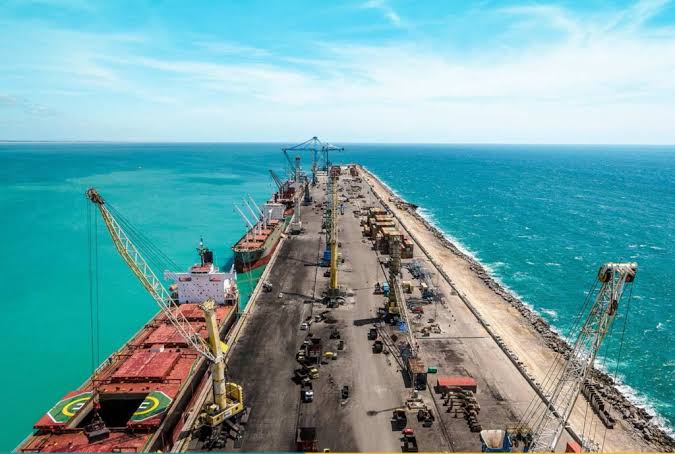
He went into operation in the Port of Pecém, Ceará, a new sea route connecting the northeast of Brazil to the main ports of Asia.
The line, called Santana Service, reduces the average time of goods transport between Brazil and China from 60 to 30 days, as informed by the Pecém Industrial and Port Complex (CIPP).
The operation is conducted by the company MSC, with support from APM Terminals. The new connection includes scales in the Asian ports of Yantian, Ningbo, Shanghai and Qingdao (China), Busan (South Korea), Mundra (India) and Singapore.
The route crosses the Pacific Ocean and passes through the Panama Canal, with stops in Cristóbal (Panama) and Caucedo (Dominican Republic), before reaching the port of Pecém. After landing in Ceará, the ships go to the ports of Suape (PE), Salvador (BA) and Santos (SP).
Prior to the implementation of the new line, cargo from Asia arrived at the port of Santos and later were redistributed to the Northeast by cabotage.
With the change, the delivery time for goods for Ceará will be reduced within 14 days, especially favoring perishable products such as fruits and meat.
According to Max Quintino, president of CIPP, the new route represents an opportunity to expand the operational capacity of the Ceará terminal.
“The new sea route between China and Fortaleza significantly reduces cargo transportation time and improves logistics. Travel time will decrease from approximately 60 days to just 30 days, making the state more competitive in foreign trade,” he said.
The forecast of CIPP is that the weekly movement of movement will increase by about 1,200 containers, representing a growth of up to 10% in the general operation of Porto. The new connection also makes room for the consolidation of Pecém as a preferred point of entry of Asian goods in the country.
Impacted sectors
Among the imported products that should benefit from new logistics are mineral fuels, iron, various ores, industrial equipment, electrical and plastic materials.
In the opposite direction, the export of granite, marble, cashews, carnauba wax, fruits, meats, shoes, textile products and e -commerce items should gain competitiveness.
The operation can also have direct impacts on digital commerce. According to CIPP, Asian platforms such as SHOPEE and ALIEXPRS should use the Porto do Pecém as a starting point in Brazil, which should reduce logistics costs and shorten delivery times. It is expected to grow up to 20% in the volume of goods intended for e-commerce.
Geopolitical and industrial repercussions
The launch of the new route occurs in a context of instability in trade relations between China and the United States, expanding the strategic value of alternative logistics channels.
The port of Pecém, in this scenario, can function as a priority corridor for the flow of Asian goods to Latin America.
In the industrial level, the state of Ceará prepares to receive the first lots of vehicles assembled locally from November, focusing on electric models originating from China.
The new maritime connection should facilitate the logistics of imported parts and components, contributing to the implementation of the local automotive pole.
According to CIPP, the industrial project is estimated at approximately R $ 2.5 billion (about US $ 500 million), with the possibility of expansion according to the evolution of operations.
“Timing was a coincidence,” Quintino said, adding that the new route “has the potential to consolidate itself as a strategic alternative to the current global scenario.”
Logistical perspectives
The new maritime line will be integrated with other terminal operations, which include cargo transportation in containers and bulk. The Port of Pecém operates under Export Processing Zone (SPA), which allows tax incentives and greater competitiveness for exporting companies.
The expectation is that, with the shortening of deadlines and the reduction of logistics steps, the terminal expands its participation in the Brazilian foreign trade matrix. The line will continue to coexist with traditional flows via Santos, but with redistribution of the load to optimize the arrival time to the final destination.
With the beginning of the operations of the Santana Service, the Port of Pecém is positioned as a new axis of integration of Brazil with Asian markets, influencing productive chains aimed at both importation and export. The logistics impact should be monitored over the coming months, according to the frequency and volume of operations to stabilize.
With information from Xinhua
Source: https://www.ocafezinho.com/2025/04/20/conheca-o-porto-brasileiro-que-vai-encurtar-pela-metade-a-rota-de-comercio-com-a-china/

